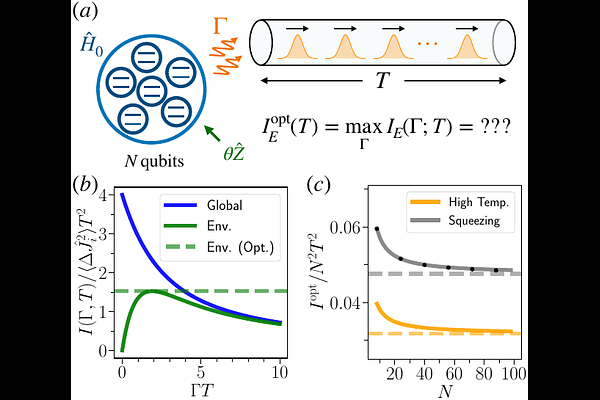Timescales, Squeezing and Heisenberg Scalings in Many-Body Continuous Sensing

Timescales, Squeezing and Heisenberg Scalings in Many-Body Continuous Sensing
Gideon Lee, Ron Belyansky, Liang Jiang, Aashish A. Clerk
AbstractThe continuous monitoring of driven-dissipative systems offers new avenues for quantum advantage in metrology. This approach mixes temporal and spatial correlations in a manner distinct from traditional metrology, leading to ambiguities in how one identifies Heisenberg scalings (e.g.~standard asymptotic metrics like the sensitivity are not bounded by system size). Here, we propose a new metric for continuous sensing, the optimized finite-time environmental quantum Fisher information (QFI), that remedies the above issues by simultaneously treating time and system size as finite resources. In addition to having direct experimental relevance, this quantity is rigorously bounded by both system size and integration time, allowing for a precise formulation of Heisenberg scaling. We also introduce two many-body continuous sensors: the high-temperature superradiant sensor, and the dissipative spin squeezer. Both exhibit Heisenberg scaling of a collective magnetic field for multiple directions. The spin squeezed sensor has a striking advantage over previously studied many-body continuous sensors: the optimal measurement achieving the full QFI does not require the construction of a complex decoder system, but can be achieved using direct photodetection of the cavity output field.